
How to Use Adafruit Bicolor 8x8 LED Matrix Backpack: Examples, Pinouts, and Specs
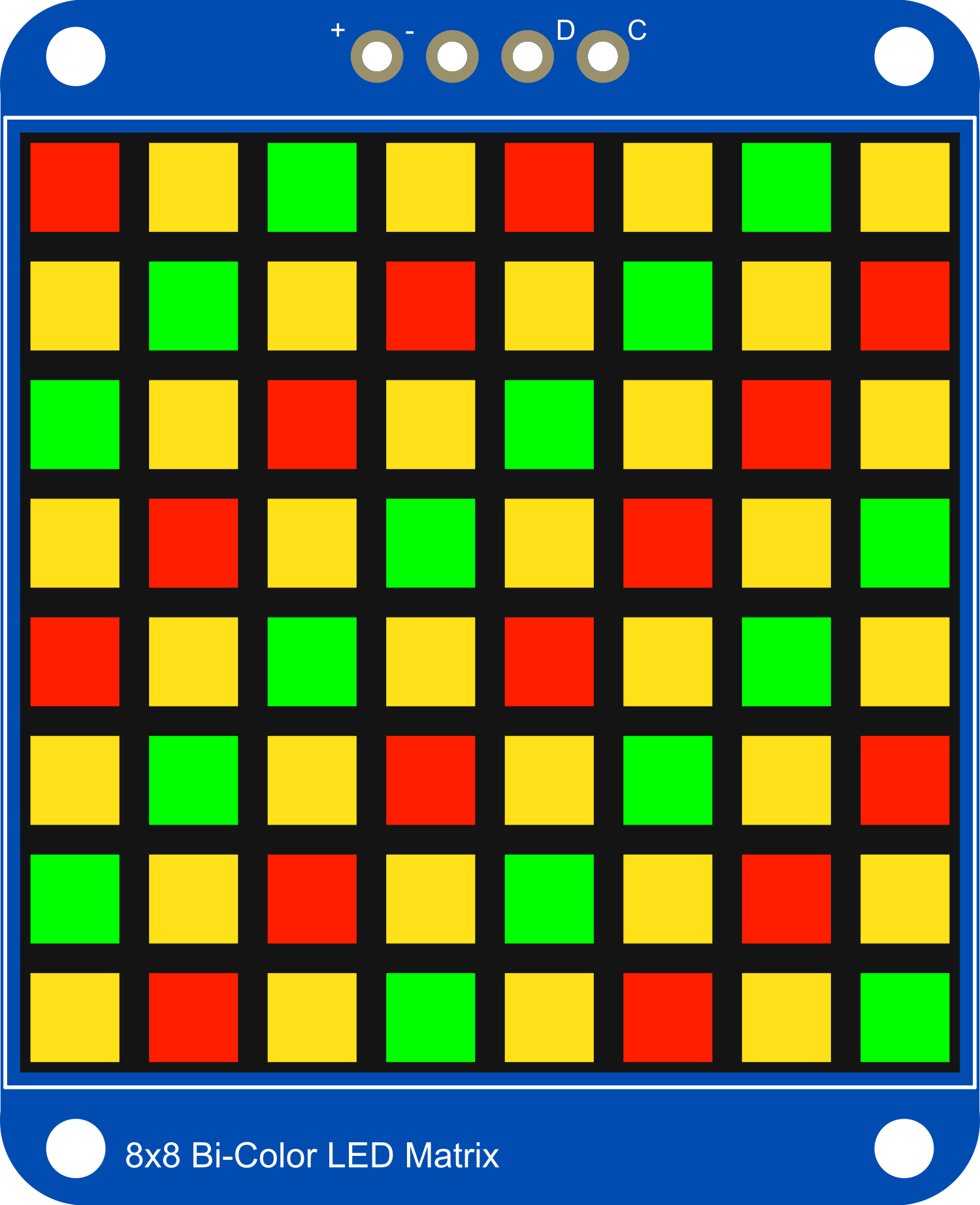
 Design with Adafruit Bicolor 8x8 LED Matrix Backpack in Cirkit Designer
Design with Adafruit Bicolor 8x8 LED Matrix Backpack in Cirkit DesignerIntroduction
The Adafruit Bicolor 8x8 LED Matrix Backpack is an electronic component designed to control an 8x8 bicolor (red and green) LED matrix. This backpack simplifies the process of driving the numerous LEDs and provides a way to interface with the matrix using a minimal number of pins through the I2C interface. It is commonly used in projects that require visual output, such as simple games, status indicators, or message displays.
Explore Projects Built with Adafruit Bicolor 8x8 LED Matrix Backpack
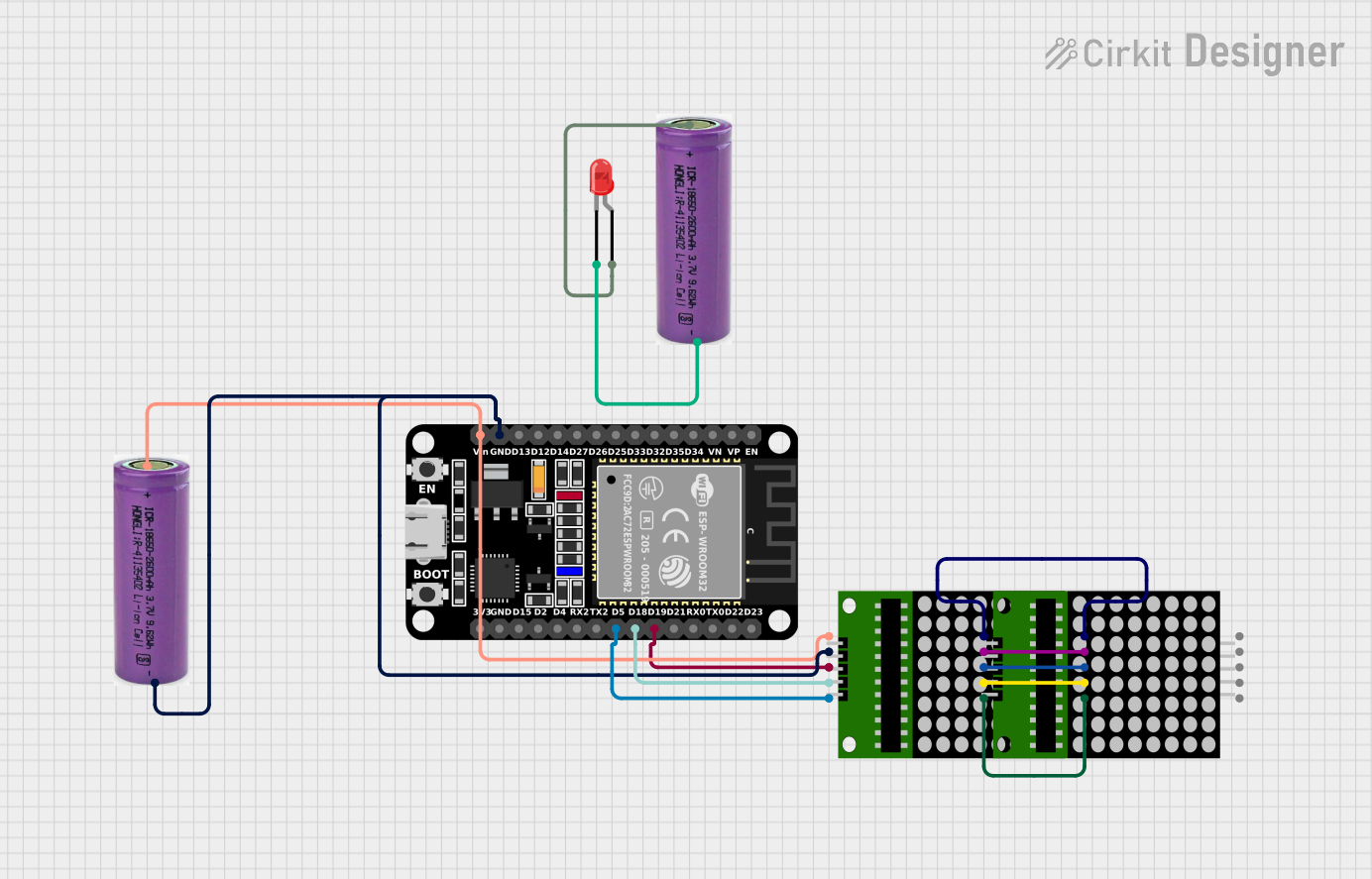
 Open Project in Cirkit Designer
Open Project in Cirkit Designer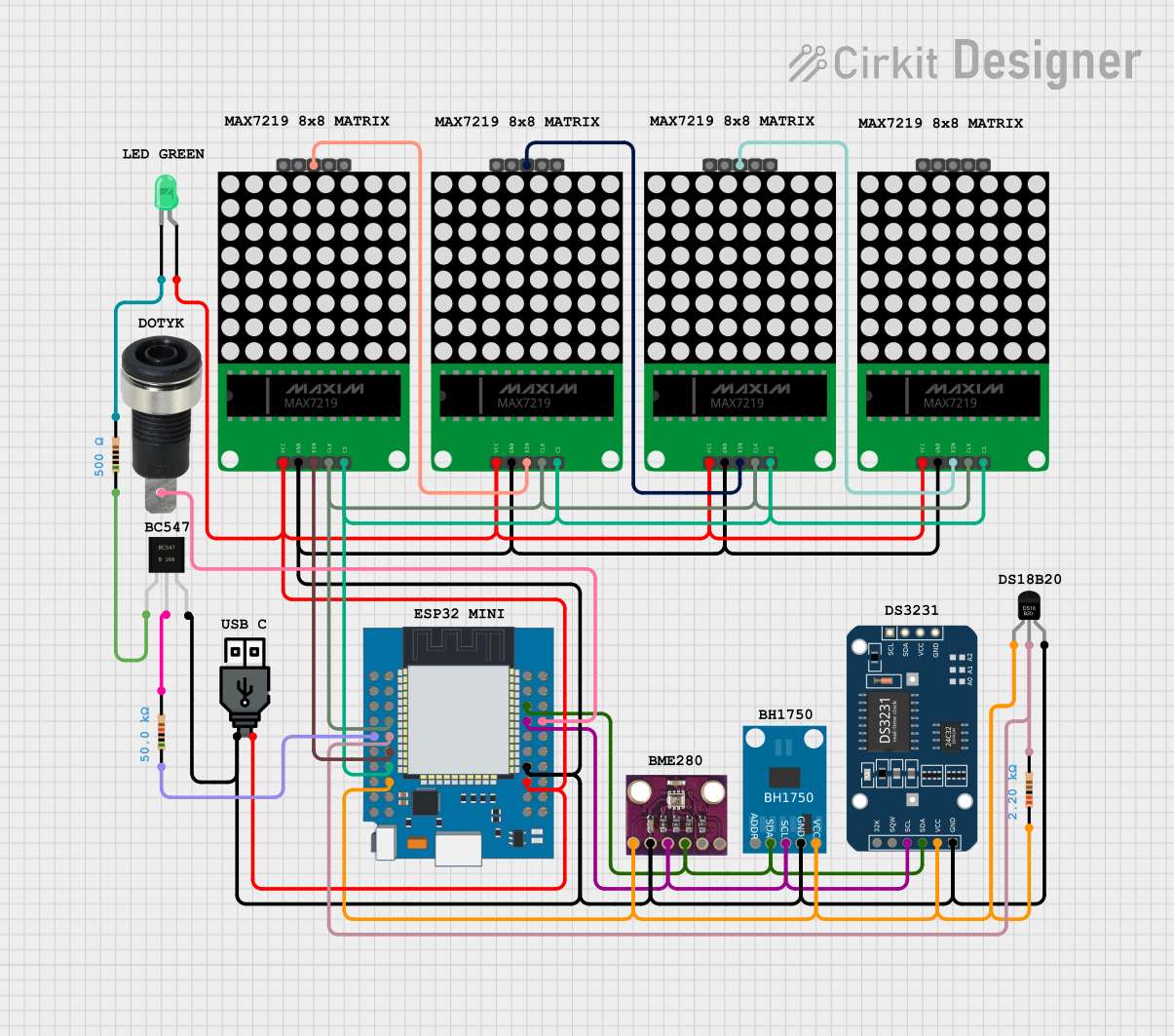
 Open Project in Cirkit Designer
Open Project in Cirkit Designer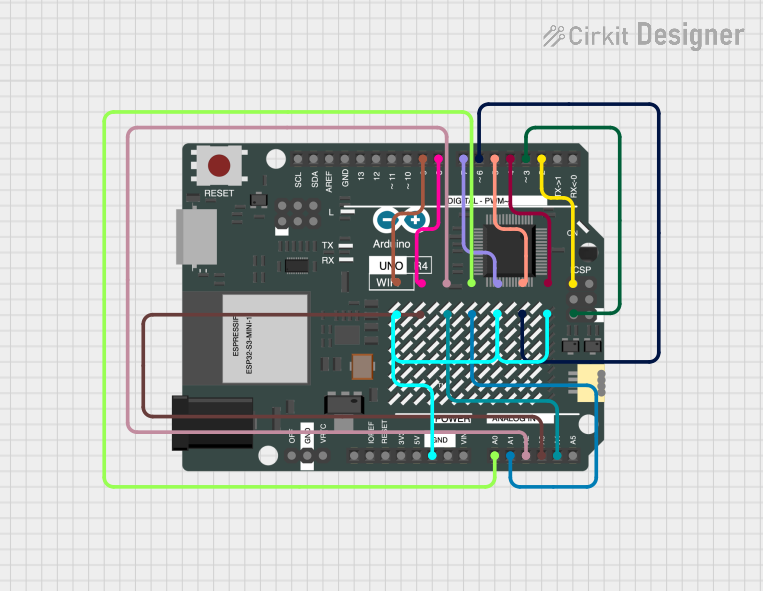
 Open Project in Cirkit Designer
Open Project in Cirkit Designer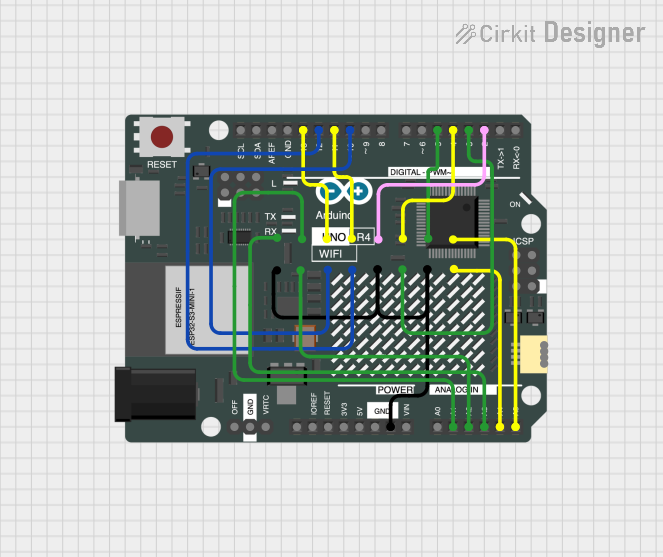
 Open Project in Cirkit Designer
Open Project in Cirkit DesignerExplore Projects Built with Adafruit Bicolor 8x8 LED Matrix Backpack

 Open Project in Cirkit Designer
Open Project in Cirkit Designer
 Open Project in Cirkit Designer
Open Project in Cirkit Designer
 Open Project in Cirkit Designer
Open Project in Cirkit Designer
 Open Project in Cirkit Designer
Open Project in Cirkit DesignerCommon Applications and Use Cases
- Displaying scrolling text messages
- Creating simple games
- Showing status indicators and symbols
- Building DIY clocks or counters
- Educational projects to teach electronics and programming
Technical Specifications
Key Technical Details
- Operating Voltage: 4.5V to 5.5V
- Max Current per LED: 30mA
- Communication: I2C interface
- I2C Addresses: 0x70-0x77 selectable with solder jumpers
- Dimensions: 64mm x 32mm x 7mm
Pin Configuration and Descriptions
| Pin Number | Name | Description |
|---|---|---|
| 1 | GND | Ground connection |
| 2 | VCC | Power supply (4.5V to 5.5V) |
| 3 | SDA | I2C Data line |
| 4 | SCL | I2C Clock line |
Usage Instructions
How to Use the Component in a Circuit
- Power Connections: Connect the VCC pin to the positive supply voltage (4.5V to 5.5V) and the GND pin to the ground.
- I2C Connections: Connect the SDA and SCL pins to the corresponding I2C data and clock lines on your microcontroller.
- Address Selection: If using multiple matrices, set the I2C address for each one using the solder jumpers on the back of the backpack.
Important Considerations and Best Practices
- Ensure that the power supply voltage is within the specified range to prevent damage.
- Use pull-up resistors on the I2C lines if they are not already present on the microcontroller board.
- When daisy-chaining multiple matrices, ensure that the total current does not exceed the power supply capabilities.
Example Code for Arduino UNO
#include <Wire.h>
#include <Adafruit_GFX.h>
#include <Adafruit_LEDBackpack.h>
Adafruit_BicolorMatrix matrix = Adafruit_BicolorMatrix();
void setup() {
matrix.begin(0x70); // Initialize the matrix with its I2C address
matrix.setBrightness(10); // Set the brightness to a medium level
}
void loop() {
matrix.clear(); // Clear the matrix display
matrix.drawPixel(0, 0, LED_GREEN); // Draw a green pixel in the top-left corner
matrix.writeDisplay(); // Write the changes to the display
delay(500);
matrix.clear();
matrix.drawPixel(7, 7, LED_RED); // Draw a red pixel in the bottom-right corner
matrix.writeDisplay();
delay(500);
}
This example initializes the matrix and alternates between lighting up a green pixel in the top-left corner and a red pixel in the bottom-right corner.
Troubleshooting and FAQs
Common Issues Users Might Face
- Display Not Lighting Up: Ensure that the power supply is connected correctly and within the specified voltage range. Check the I2C connections and address settings.
- Dim or Flickering LEDs: Adjust the brightness setting in the code or check for a stable power supply.
- Incorrect LED Colors: Verify that the color constants in the code match the desired colors.
Solutions and Tips for Troubleshooting
- Double-check wiring connections for any loose connections or shorts.
- Use a multimeter to verify the voltage levels at the power supply and I2C pins.
- Ensure that the correct I2C address is used in the code if multiple matrices are connected.
FAQs
Q: Can I use this matrix with a 3.3V system? A: While the matrix is rated for 4.5V to 5.5V, some 3.3V systems may be able to drive it. However, level shifting for the I2C lines may be necessary.
Q: How do I change the I2C address? A: The I2C address can be changed by soldering the address jumpers on the back of the backpack to create a binary code corresponding to the desired address.
Q: Can I display multiple colors on a single LED? A: Each LED can display red, green, or a combination of both to appear yellow. Individual LEDs cannot display other colors or gradients.
Q: How many of these matrices can I chain together? A: You can chain up to eight matrices together by setting unique I2C addresses for each one.
For further assistance, consult the Adafruit support forums or the product's FAQ page.